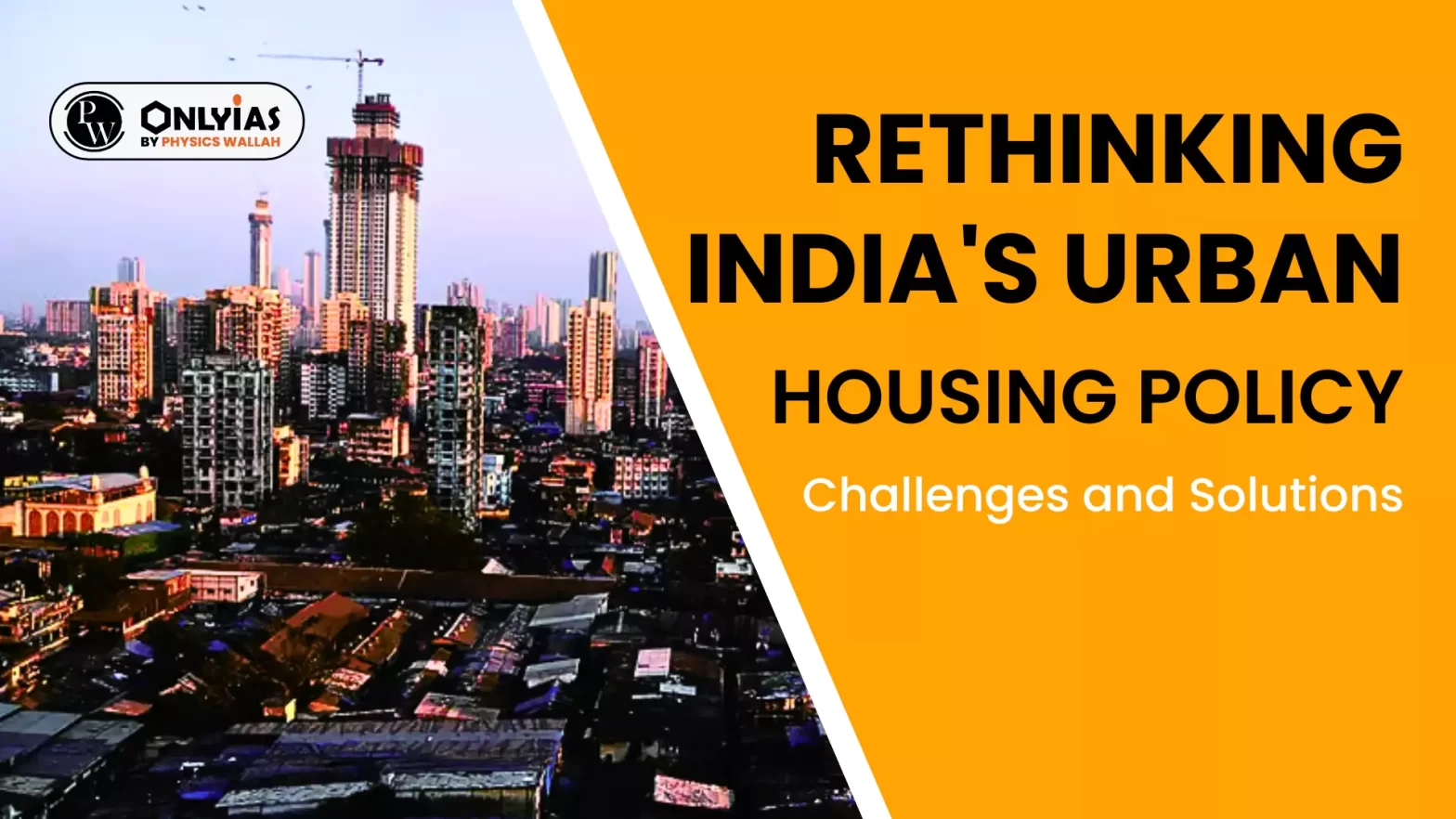Context
According to a 2019 UN report, cities occupy 3% of India’s land and contribute about 60% to the economy.
India’s Affordable Urban Housing Initiatives
- Pradhan Mantri Awas Yojana: In recognition of the need for affordable and quality housing, the government launched the PM Awas Yojana-Urban (PMAY-U) in June 2015 to provide housing for all by December 2024.
- Around 8.2 million of nearly 11.7 million houses approved under the scheme have been completed.
- In contrast, 25 million houses of the 29.5 million target under the scheme’s rural version, PMAY-Gramin, had been completed by November 2023.
- Lower Completion Rate: Not only is the urban version of PMAY completion rate lower, but many houses constructed under it remain unoccupied.
Enroll now for UPSC Online Course
Challenges in India’s Urban Housing
- Issues with livability: The Standing Committee on Housing and Urban Affairs noted in 2022 that many houses under Pradhan Mantri Awas Yojana (Urban) are not in “liveable condition,” pointing to missing windows and doors, and illegal occupation by “anti-social elements.”
- PMAY-Urban Beneficiary Selection Concerns: Comptroller and Auditor General report noted several issues related to the selection of beneficiaries under PMAY-U.
- In Karnataka, for example, some beneficiaries got multiple benefits while ineligible people got allotments.
- Low Demand: Given weak purchase demand for public housing , the Centre launched a scheme under which PMAY-U houses are repaired and converted into affordable rental housing complexes for urban migrants/poors.
Barriers to Urban Public Housing Demand: Location, Maintenance, and Cultural Hurdle
- Lack of Choice in location: A housing subsidy in rural areas is used to build homes on land owned by families in their native places.
- The location of a residence is not decided by the government, but by individuals. Urban public housing can’t offer such a choice.
- Maintenance Challenges: In apartment complexes, public space maintenance and shared-resource use are often subject to the ‘tragedy of commons.’ Public resources tend to get misused and suffer from poor upkeep.
- Preference for Upward Mobility: People may not prefer to live in neighborhoods that do not suit their aspirations of upward mobility.
- Cultural Barriers for Migrants: Migrants from other states often stay together and form a small local community, since assimilation in the larger urban community takes time. That may discourage migrants from other states from applying for public housing rental apartments.
- Lack of Information: It is also unclear if there is proper dissemination of information on the rental housing available, the process of applying for it, and so on.
Way Forward to Urban Housing
- Exploring Innovative Policies: The 2015 National Urban Rental Housing Policy mentions the provision of a fund to set up a rental voucher scheme and a pilot project in selected cities.
- The vouchers were meant to partially offset the cost of private housing rent incurred by the urban poor and migrants.
- Challenges of Affordability: Rents in our cities are so high that even after a rent subsidy, private housing remains largely unaffordable to the urban poor.
- Boost Urban Housing Supply: The supply of urban housing can be increased via two measures:
- First, a stockpile of private accommodation can be unlocked that remains locked up because of unfavorable terms for house owners under rental laws.
- Second, regulations can be eased that control and thereby slow the construction of new homes in big cities.
Conclusion
If India is to become a prosperous nation, our cities would be at its core. It is therefore imperative to rethink the country’s urban public housing policy once national elections are over.
Also Read: Gelephu: The World’s First Mindfulness City Is In Bhutan
![]() 25 Apr 2024
25 Apr 2024

